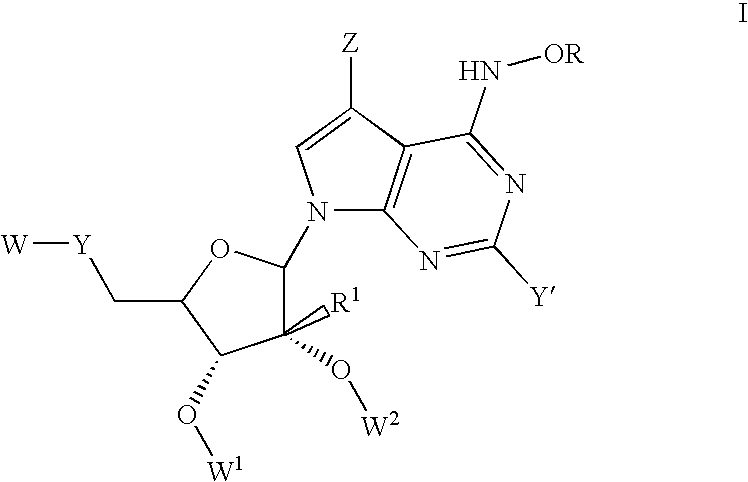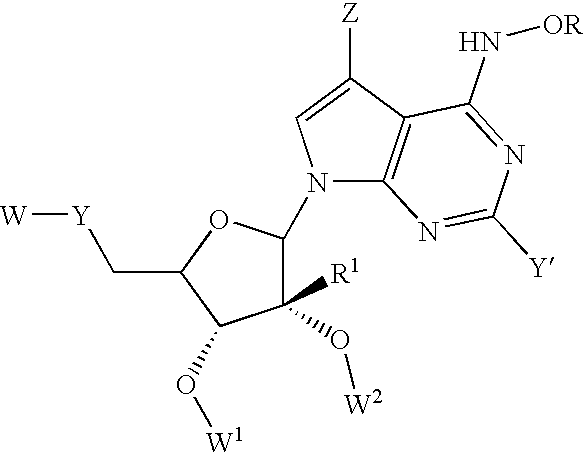Nucleoside derivatives for treating hepatitis C virus infection
a technology of hepatitis c virus and nucleosides, applied in the field of pharmaceutical chemistry, can solve the problems of liver failure or liver cancer, death, and eventually death, and achieve the effects of no effective immunization currently available, and no effective immunization is currently availabl
- Summary
- Abstract
- Description
- Claims
- Application Information
AI Technical Summary
Benefits of technology
Problems solved by technology
Method used
Image
Examples
formulation examples
[0252]The following are representative pharmaceutical formulations containing a compound of Formula IV or IVA.
example 1
Tablet Formulation
[0253]The following ingredients are mixed intimately and pressed into single scored tablets.
[0254]
Quantity perIngredienttablet, mgcompound of this invention400cornstarch50croscarmellose sodium25lactose120magnesium stearate5
example 2
Capsule Formulation
[0255]The following ingredients are mixed intimately and loaded into a hard-shell gelatin capsule.
[0256]
Quantity perIngredientcapsule, mgcompound of this invention200lactose, spray-dried148magnesium stearate2
PUM
| Property | Measurement | Unit |
|---|---|---|
| size | aaaaa | aaaaa |
| temperature | aaaaa | aaaaa |
| size | aaaaa | aaaaa |
Abstract
Description
Claims
Application Information
 Login to View More
Login to View More - R&D
- Intellectual Property
- Life Sciences
- Materials
- Tech Scout
- Unparalleled Data Quality
- Higher Quality Content
- 60% Fewer Hallucinations
Browse by: Latest US Patents, China's latest patents, Technical Efficacy Thesaurus, Application Domain, Technology Topic, Popular Technical Reports.
© 2025 PatSnap. All rights reserved.Legal|Privacy policy|Modern Slavery Act Transparency Statement|Sitemap|About US| Contact US: help@patsnap.com



